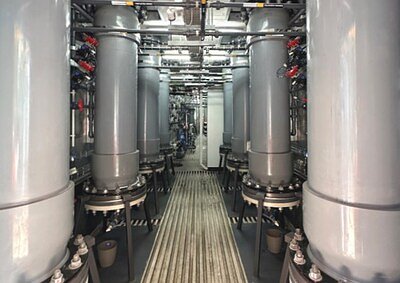
Beyond Evaporation: Startup Aims to Quench Lithium's Thirst with Novel Extraction Tech
As demand for EV batteries surges, a Chilean startup is challenging traditional lithium mining with a new direct extraction method promising significant water savings – and disrupting a multi-billion dollar industry.
Beyond Evaporation: Startup Aims to Quench Lithium's Thirst with Novel Extraction Tech
SANTIAGO, Chile – The race to secure critical minerals for the burgeoning electric vehicle (EV) revolution is intensifying, but so too is scrutiny over the environmental cost of extraction. Traditional lithium mining, heavily reliant on evaporation ponds in arid regions like the Atacama Desert, is facing increasing pressure due to its significant water footprint. Now, a Chilean startup, Summit Nanotech, is aiming to disrupt the industry with a novel Direct Lithium Extraction (DLE) technology promising substantial water savings and a more sustainable path forward.
Summit Nanotech recently announced a breakthrough: its DLE process uses approximately 30% less freshwater than traditional evaporation ponds and 50% less than other commercially available DLE methods – all while maintaining high lithium recovery rates (96-99%). This achievement, validated through independent testing, positions the company as a potential game-changer in a market projected to reach billions of dollars in the coming years.
The Problem with Ponds
For decades, lithium extraction has largely relied on pumping brine from underground reservoirs into vast evaporation ponds. This process, while relatively inexpensive, is incredibly slow, water-intensive, and can have devastating impacts on local ecosystems and communities. The Atacama Desert, home to a significant portion of the world’s lithium reserves, is particularly vulnerable. “The traditional method is incredibly inefficient,” explains an industry analyst. “It takes months, even years, to concentrate the lithium. And the sheer scale of the evaporation ponds consumes vast amounts of water in an already water-stressed region.”
A New Approach: DLE and Flow Sequencing
Direct Lithium Extraction (DLE) technologies aim to bypass the evaporation stage by selectively removing lithium from brine using various methods, including adsorption, solvent extraction, and membrane separation. Summit Nanotech’s approach centers on a proprietary flow sequencing method combined with high-performance sorbents. While the specifics remain closely guarded, the company claims its process allows for faster, more efficient lithium recovery with a significantly reduced water footprint.
“We’re essentially ‘filtering’ the lithium from the brine,” explains a company spokesperson. “Our technology allows us to concentrate the lithium much more quickly and with far less water than traditional methods. This not only reduces environmental impact but also potentially allows for faster production and lower costs.”
Beyond Water: Scalability and Sustainability
The promise of reduced water consumption isn’t the only benefit of Summit Nanotech’s approach. DLE technologies, in general, offer the potential for greater scalability and sustainability. Unlike evaporation ponds, which require large land areas, DLE systems can be modular and deployed in a smaller footprint.
“The modularity of DLE is a key advantage,” says an industry expert. “It allows companies to adapt to different brine compositions and production scales more easily. This is particularly important for unlocking lithium resources in regions where traditional evaporation ponds aren’t feasible.”
Competition Heats Up
While Summit Nanotech’s technology shows promise, it’s entering a competitive landscape. Established lithium producers like Albemarle and Lithium Americas are also investing heavily in DLE technologies. Several other startups are also vying for market share. This competition is driving innovation, but also creating uncertainty.
“There's a lot of hype around DLE right now,” says an analyst. “The challenge is scaling up these technologies and demonstrating their long-term economic viability. Not all DLE technologies will be successful.”
One claim made by Summit Nanotech involves a demonstration project at an Albemarle facility in Chile. However, details surrounding this collaboration remain opaque. Attempts to confirm the project specifics were unsuccessful.
Challenges and the Path Forward
Despite the potential benefits, scaling up DLE technologies isn’t without challenges. Brine composition varies significantly from one location to another, requiring customized solutions. The cost of specialized equipment and chemicals can also be substantial. Furthermore, the environmental impact of the chemicals used in some DLE processes needs careful consideration.
“It's not just about reducing water consumption,” explains an environmental advocate. “We need to ensure that DLE processes are truly sustainable and don't create other environmental problems. Proper waste management and responsible chemical handling are crucial.”
Summit Nanotech, along with other DLE innovators, faces the task of proving the long-term economic and environmental viability of their technologies. Successful scaling will require significant investment, strategic partnerships, and a commitment to responsible resource management.
As demand for lithium continues to surge, the industry is at a critical juncture. Embracing more sustainable extraction methods is no longer just an environmental imperative; it's a business necessity. Companies like Summit Nanotech, with their innovative approaches, are poised to play a key role in shaping the future of lithium production and enabling the clean energy transition. The path forward will be challenging, but the potential rewards – both for the environment and for the industry – are significant.
